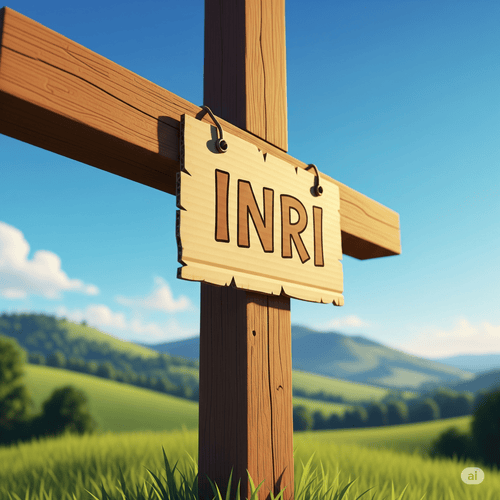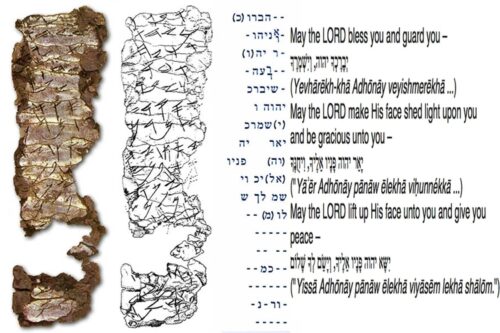Plants Before Sun? Does Genesis Get the Creation Order Wrong?
Here’s one of the most common objections to the biblical creation account: Genesis 1 says God created plants on Day 3 but didn’t make the sun until Day 4. Since plants need sunlight for photosynthesis, doesn’t this prove the Bible gets basic science wrong?
It’s a fair question that deserves a careful answer. But when we examine the text closely and think through what’s actually happening in Genesis 1, the supposed contradiction vanishes. Here’s why.
LIGHT EXISTED BEFORE THE SUN WAS “MADE”
Consider what many critics miss: Genesis 1:3 tells us God created light on Day 1—”Let there be light.” So plants created on Day 3 weren’t sitting in darkness. Light already existed to sustain them.
But what about Day 4, when God “made” the sun, moon, and stars? The Hebrew word used here is asah, which can mean “made,” “appointed,” or “fashioned.” It’s different from bara, the word for creating something from nothing (used in Genesis 1:1). This suggests Day 4 may not be about creating celestial bodies but about appointing them to their roles as timekeepers and light-governors for Earth.
Think of it this way: the sun may have existed from Day 1 but became visible or received its official function only on Day 4. Imagine a thick cloud cover obscuring the sun’s direct view from Earth’s surface. By Day 4, the atmosphere cleared enough for the sun, moon, and stars to appear distinctly and serve their governing purposes.
AN OBSERVER’S PERSPECTIVE
Genesis 1 reads like an account from Earth’s surface looking up. On Day 2, God creates the “expanse” separating waters—likely describing atmospheric formation. As the atmosphere developed and cleared, celestial bodies that already existed became progressively visible.
Day 4 wasn’t necessarily when these bodies were created, but when they became visible markers for “signs and seasons, days and years” from an Earth-observer’s viewpoint. This perfectly explains the sequence without any scientific error.
GOD ISN’T LIMITED BY NATURAL PROCESSES
But wait, says the sceptic: What if we do take the most literal reading—that the sun didn’t exist until Day 4? Well, even then we’re talking about a single 24-hour period. Could an all-powerful God sustain plant life for one day without the normal mechanisms we see today? Of course.
Scripture repeatedly shows God providing light apart from the sun. He led Israel through the wilderness with a pillar of fire. Revelation 21:23, in fact describes the New Jerusalem as needing no sun because God’s glory illuminates it. If God can create the universe from nothing, sustaining plants for 24 hours without sunlight is hardly a challenge.
The objection often smuggles in a naturalistic assumption—that God must work only through the processes we observe today. But Genesis 1 describes a unique, unrepeatable creation event where God’s direct power was at work in ways we don’t see in the present.
THE LITERARY STRUCTURE CONFIRMS THIS
Genesis 1, in fact, follows an elegant pattern. On Days 1-3 God creates domains or spheres; and on Days 4-6, He fills those domains with inhabitants:
Day 1: God creates light / Day 4: He creates light-bearers (sun, moon, stars)
Day 2: He creates sky and sea / Day 5: He fills them with birds and fish
Day 3: He creates land and plants / Day 6: He fills land with animals and humans
This parallel structure shows the account is carefully organised but still describes real, historical events. The topical arrangement doesn’t make it less true—it makes it masterfully composed.
PLANTS CAN HANDLE BRIEF DARKNESS
From a purely scientific standpoint, most plants can easily survive 24 hours without direct sunlight. Many species thrive in low-light environments. Seedlings regularly spend days underground before breaking through to sunlight.
Whether you hold to 24-hour days or longer periods (as some young earth creationists do), the biology isn’t problematic. Plants are remarkably resilient, and we’re only talking about a brief period before the sun became functional as their primary light source.
THE REAL ISSUE: TRUSTING SCRIPTURE
Those who voice this objection perhaps reveal more about their presuppositions than about the text. When we approach Genesis assuming it must conform to naturalistic explanations, we’ve already decided God couldn’t have done things differently than we observe today.
But Genesis 1 describes something unique—the origin of everything. If we trust in a God who’s capable enough to create the universe, why stumble over Him temporarily sustaining plants with light from another source? The God who spoke galaxies into existence can certainly handle photosynthesis for a day.
The multiple viable explanations within a young earth framework—atmospheric clearing, functional assignment of celestial bodies, God’s miraculous provision, or some combination—show the supposed contradiction dissolves under examination. CHECK OUT THE FAQS BELOW FOR SOME SUCH EXPLANATIONS.
CONCLUSION
So, does Genesis get the creation order wrong? Not at all. When we read carefully, understand the Hebrew text, and remember we’re dealing with God’s supernatural work, the objection loses its force.
Light existed from Day 1. The sun’s role as a governing light-bearer was established on Day 4. And the God who created everything is perfectly capable of sustaining His creation however He chooses.
Rather than exposing an error in Scripture, this question offers us an opportunity to dig deeper into the text and trust that God’s Word is reliable—even when it describes events beyond our everyday experience.
DOES GENESIS GET THE CREATION ORDER WRONG? RELATED FAQs
What is the “appearance view” or atmospheric clearing explanation? This view suggests the sun, moon, and stars were created on Day 1 as part of the heavens, but weren’t visible from Earth’s surface until Day 4. Dense water vapour or cloud cover may have obscured them until God cleared the atmosphere, allowing them to “appear” and function as visible timekeepers. This explanation treats Genesis 1 as written from an Earth-observer’s perspective, much like we still say the sun “rises” even though we know Earth rotates.
- What does “functional assignment” mean in Genesis 1:14-19? The functional view emphasises Day 4 isn’t about creating celestial bodies but appointing them to their roles. Just as a king might be born years before his coronation ceremony that officially installs him as ruler, the sun and moon may have existed but received their formal function on Day 4 as governors of day and night and markers for seasons. The Hebrew construction supports this reading, focusing on purpose (“let them be for signs and seasons”) rather than material origins.
- How could God miraculously sustain plants without the sun? God is the ultimate source of all energy and life, and He’s not bound by the natural laws He established. Just as He provided manna in the wilderness and made the sun stand still for Joshua, He could easily provide whatever energy plants needed for 24 hours through direct supernatural means. This view emphasises creation week was a unique, miraculous event where God worked directly in ways we don’t observe in the present.
Do all young earth creationists agree on this issue? No, YECs hold a variety of views on the best explanation. Some favour the atmospheric clearing view, others prefer functional assignment, while some emphasise God’s miraculous provision. Many believe a combination of these factors is likely. What unites YECs is the conviction that Genesis describes literal, 24-hour days in recent history and that there’s no actual error in the text—only different perspectives on the best explanation.
- What’s the difference between the Hebrew words bara, asah, and yatsar in Genesis? The three words all relate to creation but with nuances. Bara (used in Genesis 1:1, 1:21, 1:27) means to create something truly new, often from nothing. Asah (used for the sun, moon, and stars in 1:16) means to make, fashion, or appoint—it can refer to making something from existing materials or assigning function. Yatsar means to form or fashion, like a potter shaping clay. The choice of asah on Day 4 suggests appointing or revealing rather than initial creation.
- Could “day” in Genesis 1 mean a long period of time instead of 24 hours? While some old-earth creationists argue this, most young earth creationists hold that “day” (yom) in Genesis 1 means a literal 24-hour period. The phrase “evening and morning” accompanying each day, the use of numbered days (first day, second day), and Exodus 20:11’s reference to creation week as the basis for our seven-day week all support literal days. However, even if one accepted longer periods, it wouldn’t resolve the objection since plants still couldn’t survive millions of years without the sun.
Why does Genesis 1 mention light three times (Day 1, Day 3 with plants, Day 4 with luminaries)? The repetition emphasises light’s crucial role in creation and isn’t contradictory. Day 1 establishes light itself as distinct from darkness. Day 3 mentions plants that will depend on light. Day 4 establishes the sun, moon, and stars as the ongoing light-bearers that will govern Earth’s rhythms. The structure shows progression from general (light exists) to specific (light-sources assigned their roles), demonstrating God’s orderly creative process.
DOES GENESIS GET THE CREATION ORDER WRONG? OUR RELATED POSTS
Editor's Pick

Can Repentance be Real If We Struggle With Habitual Sin?
We’ve been there before. The weight of conviction sinks in as we realise we’ve fallen into the same sin. All [...]
The Ketef Hinnom Scrolls: An Accidental Yet Phenomenal Find
SMALLER THAN OUR PALM, OLDER THAN THE DEAD SEA SCROLLS In 1979, a bored 13-year-old volunteer at an archaeological dig [...]

Caught in Adultery: How Reliable Is the John 8 Story?
"Let him who is without sin cast the first stone." Few Bible scenes capture Jesus' wisdom and grace quite like [...]

What Did the Inscription on Jesus’ Cross Really Say?
A REFORMED RESPONSE TO CLAIMS OF GOSPEL CONTRADICTIONS Sceptics love to point out what they see as a glaring contradiction [...]

Biblical and Systematic Theology: Why Do We Need Both?
TWO LENSES, ONE TRUTH Picture this familiar scene: A seminary student sits in the library, torn between two stacks of [...]

The Mysterious Two: Who Are the Anointed Ones in Zechariah?
Picture this: a golden lampstand blazing with light, flanked by two olive trees that pour oil directly into the lamp’s [...]

Regeneration Or Faith? Which Comes First in Salvation?
In the moment of salvation, does God regenerate our hearts first, or do we believe first? How we answer this [...]

Interracial Marriages: Does God Frown On Them?
The question hits close to home for many Christian couples and families today. As our churches become increasingly diverse, believers [...]
‘Because Angels Are Watching’: What Does 1 Corinthians 11:10 Mean?
“For this reason the woman ought to have authority on her head, because of the angels” (1 Corinthians 11:10, ESV). [...]

Why Does God Torment Saul With An Evil Spirit?
Would a holy God send an evil spirit to torment someone? This theological puzzle confronts us in the biblical account [...]
SUPPORT US:
Feel the Holy Spirit's gentle nudge to partner with us?
Donate Online:
Account Name: TRUTHS TO DIE FOR FOUNDATION
Account Number: 10243565459
Bank IFSC: IDFB0043391
Bank Name: IDFC FIRST BANK








